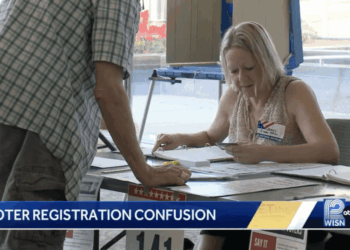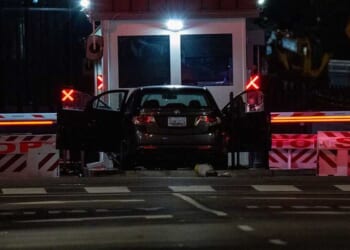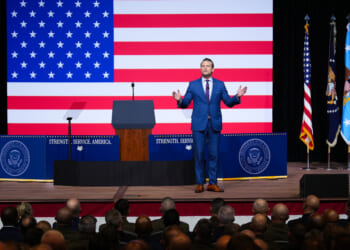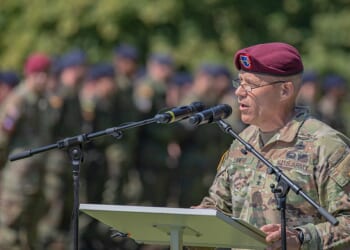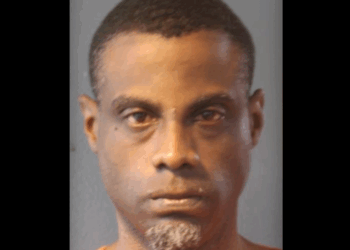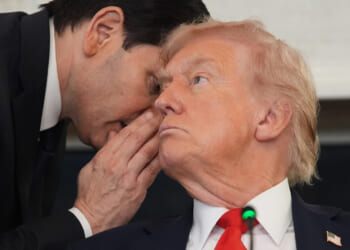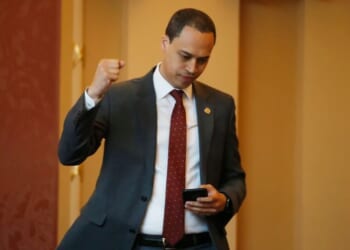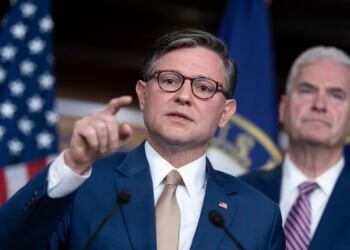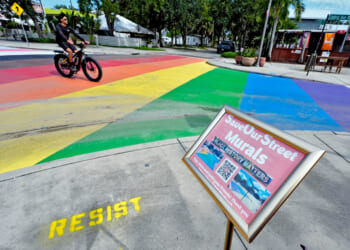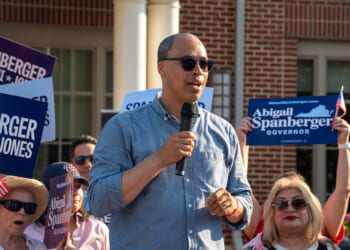Walter Joseph “Joe” Marm Jr. is a native of Washington, Pennsylvania. His father, Walter Sr., was a State Police officer, and his mother, Dorothy, was a retail clerk. He was raised in a devout Catholic family and learned to shoot at an early age. He attended parochial school, where he competed on a rifle team and would become an Eagle Scout. He excelled academically and, at Duquesne University, also competed on the rifle team.
Though completing a business degree, his team coach encouraged him to pursue a military career. After graduating in 1964, he did just that.
He completed Army Officers Candidate School and then Ranger School.
Curious about the faraway conflict in Vietnam, he says, “I started going to the library and checking out books about Vietnam to see what it was like.”
Soon enough, then-2LT Marm would find out firsthand.
Joe notes, “We were in the last phase of Ranger School in Florida when they called out 50 names and said, ‘Your orders are now changed. You aren’t going to Fort Jackson; you’re going to this unit up at Fort Benning.’ Rumor had it that the unit was going to Vietnam. And that’s what happened. … And a month later, we were heading to Vietnam on a World War II merchant marine ship.”
Of his unit, he said: “There’s always a tension and fear of the unknown, but these troops had been training and working together and testing the helicopters in war games for over a year. It turned out to be a very, very good unit. They were excellent soldiers, and I was blessed to have skilled leaders, too.”
Joe deployed to Vietnam in September 1965. On 14 November, as leader of 2nd Platoon, A Company, 1st Battalion, 7th Cavalry Regiment, 1st Cavalry Division (Airmobile), he would be in the middle of the week-long Battle of la Drang in 1965, the first major Vietnam battle between the U.S. Army and the NVA.
He recalls that day vividly: “One of the platoons became trapped on the side of Chu Pong Mountain. They were surrounded by the North Vietnamese and needed help; they couldn’t get out on their own. So our mission for the rest of that day was to try to get up there and get them out. We made two attempts to get up there on Nov. 14.”
What Joe and his men did not know: “The leader of the stranded platoon was killed, and his whole chain of command were killed or wounded.”
On the first attempt to reach the beleaguered platoon, Joe says: “Right in front of my position was a solidified anthill about seven or eight feet in height, with trees and shrubs around it. The NVA were using it as a machine gun bunker. I told one of my men to shoot a bazooka into it; it’s a one-shot disposable tank-killing weapon. He opened it up and put it on his shoulder, but it didn’t go off because of all the humidity and moisture. I took the weapon from him, closed and opened it up again, and it went off for me. It made a big boom and cloud of dust, and I thought we had destroyed the position.”
He says, “It really picked up morale. It picked up my morale because we thought we’d knocked it out.” Then: “We started moving forward again, but we were still taking fire. … We were taking too many casualties, so we had to pull back.”
“Our battalion commander, LTC Hal Moore, said, ‘We’re gonna go get them out with the entire unit.’ So we made a second attempt later in the afternoon. We prepped our positions as we were moving forward with artillery and mortar fire to try to silence the enemy. But the enemy was still there.” (Then-LTC Moore, a legendary 7th Cav Ranger, would also receive a Medal of Honor for his actions as Battalion commander that day.)
Determined to take out the enemy himself, as he prepared to run across the field of fire, he told his men, “Don’t shoot me up.” He says, “I ran across about 30 meters of open terrain to the bunker. I threw a grenade over the top and ran around to the left side. There were still some bad guys who were trying to shoot me, but I was able to silence them. I told my men, ‘Come on, let’s go; we gotta get to the platoon that’s trapped.’”
But Joe’s description of his actions was understated. The fact is, Joe took out a total of 18 Viet Cong fighters in the two assaults before attempting to return to his own line, when he was shot in the face. He recalls: “I stood up and got shot in the jaw; it went in my left jaw and deflected downward and underneath my right jaw and out. I had to feel my mouth to see if it was still in place.” He says that “kind of ruined my day.” Then: “Sgt. Tolliver — who was a medic in Korea and carried our aid bag — he patched me up, and a couple of my soldiers helped me back to the command post. I was evacuated later that day by helicopter.”
As his Medal of Honor citation notes:
As a platoon leader in the 1st Cavalry Division (Airmobile), 1st Lt. Marm demonstrated indomitable courage during a combat operation. His company was moving through the valley to relieve a friendly unit surrounded by an enemy force of estimated regimental size. [He] led his platoon through withering fire until they were finally forced to take cover. Realizing that his platoon could not hold very long, and seeing four enemy soldiers moving into his position, he moved quickly under heavy fire and annihilated all four. Then, seeing that his platoon was receiving intense fire from a concealed machine gun, he deliberately exposed himself to draw its fire. Thus locating its position, he attempted to destroy it with an antitank weapon. Although he inflicted casualties, the weapon did not silence the enemy fire. Quickly, disregarding the intense fire directed on him and his platoon, he charged 30 meters across open ground and hurled grenades into the enemy position, killing some of the eight insurgents manning it. Although severely wounded, when his grenades were expended, armed with only a rifle, he continued the momentum of his assault on the position and killed the remainder of the enemy.
His citation concludes: “Marm’s selfless actions reduced the fire on his platoon, broke the enemy assault, and rallied his unit to continue toward the accomplishment of this mission.”
You can listen to Joe recount the events of that day here.
Of Joe’s actions, one of his men declared, the “little lieutenant just got up and ran them down.”
The “little lieutenant”? Joe is a man of small stature but giant courage.
Visiting with him recently during the National Medal of Honor Convention, I was struck by how much his humility, intensity, and, yes, stature reminded me of a former longtime resident in our community, Medal of Honor recipient Desmond Doss. It was a pleasure to host Joe’s family for a visit at our home.
Medal of Honor recipients are generally discouraged from retiring to the front lines, but Joe says: “I felt I should pull my share of the hardship. I hated war, but I love being with soldiers. So I volunteered to go back in ‘69, to the 1st Cavalry Division again, and I made it through the whole year without getting wounded.”
Of his service, Joe concludes: “You may have heard the expression ‘There are no atheists in foxholes.’ You’re out there in a very tough area, and you’re sleeping on the ground or in a poncho liner, looking up at the stars. I would say the St. Michael prayer every day, and other prayers too. If I had the time, I would say the rosary. I believe I’ve never been as close to God as I was in combat.”
Of his Medal of Honor, Joe’s father said: “I’m very proud, to say the least. To tell you the truth, I didn’t know what kind of soldier Joey would be. He’d never been in a fight in his life. I never heard him say ‘Hell’ in his life. I never knew him to be mad at anybody.”
But as Joe notes: “It’s hard to determine, unless you go into combat, how you’re going to act. I would say no, I wasn’t surprised. I had 40 men to look after.”
He says: “Some people say the Medal is harder to wear than it is to earn. I wear the Medal for all those Soldiers in the 1st Cav who were there in that battle and other battles. I’m just the caretaker of the Medal for them. There’re so many valorous deeds that go on in combat, they all can’t be recognized. I’m no braver than many of my fellow Soldiers, I’m just grateful that they authorized me to wear it for them. So I feel I have to uphold the Medal for them. You have to take care of your fellow Soldiers and walk in their shoes, too.”
After the Battle of la Drang, Joe served another 29 years in the Army, including three years as a U.S. Military Academy instructor, before retiring as a Colonel in 1995. He and his wife, Deborah, have four children and nine grandchildren. They now live in eastern North Carolina.
COL Joe Marm (USA): An ordinary man faced with extraordinary circumstances, you summoned the greatest measure of courage to place his life in imminent peril to save others. Your example of valor — a humble American Patriot defending Liberty for all above and beyond the call of duty — is eternal.
“Greater love has no one than this, to lay down one’s life for his friends.” (John 15:13)
Live your life worthy of his sacrifice.
(Read more Profiles of Valor here.)
Semper Vigilans Fortis Paratus et Fidelis
Pro Deo et Libertate — 1776
Follow Mark Alexander on X/Twitter.
Join us in daily prayer for our Patriots in uniform standing in harm’s way in defense of American Liberty, and for the families awaiting their safe return. Pray also for our Veterans, First Responders, and their families.
Please consider a designated gift to support the National Medal of Honor Sustaining Fund’s character education initiatives through Patriot Foundation Trust, or make a check payable to “NMoH Sustaining Fund” and mail it to:
Generosity Trust
National MOH Sustaining Fund
345 Frazier Avenue, Unit 205
Chattanooga, TN 37405
Thank you for supporting our nation’s premier journal of American Liberty.
The Patriot Post and Patriot Foundation Trust, in keeping with our our Military Mission of Service to our uniformed service members and veterans, are proud to support and promote the National Medal of Honor Heritage Center, the Congressional Medal of Honor Society, both Honoring Their Sacrifice Foundation and Warrior Freedom Service Dogs aiding wounded veterans, Tunnel to Towers Foundation, the National Veterans Entrepreneurship Program, the Folds of Honor outreach and Officer Christian Fellowship, the Air University Foundation and Naval War College Foundation, and the Naval Aviation Museum Foundation.


